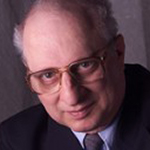January 29, 2012
Palestinians in Israel
"Israel hasn't declared its borders yet," said Peter Lawson, and there are substantial numbers of Palestinians in the country even now. Larson, a board member of the National Council on Canadian-Arab Relations, spoke at Carleton University on January 25 on the theme of "The Forgotten Palestinians," those who remain in Israel.
Today, there are 2.4 million Palestinians in the West Bank, 1.5 million in Gaza, 4.7 million refugees in places like Lebanon, Jordan, and Syria, and 1.4 million in Israel. He noted that those in Israel make up 20% of the population. The Canadian comparison would be French Canadians.
While average income of Palestinians in Israel is greater than that of those in the West Bank and of Egyptians, it is lower than that of other Israelis. For Jews, average income is $31,000, compared to $21,000 for Palestinians. 12.3% of the Jews live in poverty, compared to 44% of the Palestinians. 6.9% of the Jews are unemployed, compared to 10.9% of the Palestinians. 94% of civil service positions are filled by Jews, six per cent by Palestinians.
On a visit to Israel, Larson spoke to some of the 11 Palestinian members of the Knesset, among them Jamal Zahalka, who heads the Balad Party. “They are like the NDP,” he said. Balad advocates a country “for all its citizens,“ not a Jewish state. Zahalka told Larson that, of the 11 members of the Knesset, seven have been physically attacked by police when they took part in demonstrations. “Zahalka said that police target them.”
Land availability is one of the key problems for the Palestinians. Most municipalities are either Jewish or Palestinian. De facto segregation is typical. Often there are municipalities next to each other, with the Jewish municipality built on confiscated land. He gave as an example Kfar Kassem (Palestinian) and Rosh Ha’ayim (Jewish). While the Jewish communities typically have a full range of amenities–library, swimming pool, gymnasium, etc.–the Palestinian ones have few or none. Palestinians own less than 3.5% of the land.
Israel has established special incentive grants for designated national priority areas, almost all of which are for Jews. The virtual exclusion of Palestinians from the program was successfully challenged in the Supreme Court, but the government, according to Larson, has done nothing to correct the situation.
Palestinian towns are hemmed in, with no room to grow. They have a weak tax base and underfunded schools. Residents must ordinarily seek employment in Jewish areas, outside the community. The general state of exclusion and poverty produces social problems such as crime and drug abuse.
Israel has targeted the Bedouin, living in the Negev, which amounts to around one-third of the country. It was confiscated and declared a military area. Efforts have been made to drive them into a small zone in the Negev and to make them relocate to towns. Many of them keep going back to their old communities, in spite of the repeated destruction of their villages by the military. Israel is also planting Jewish settlements in the Negev, with financial assistance from the Jewish National Fund. Dimona, the home of Israel’s nuclear weapons program, is located in the Negev, as is an air force base.
Education is another major area of concern for Palestinians. Three or four times as much is spent on each Jewish student. As an obvious consequence, there is a 60% drop-out rate, compared to the rate of 30% for Jews who lack secondary certification (drop-outs and those in ultra-Orthodox schools that teach only the Talmud). Special programs for the gifted and the disadvantaged serve Jews, not Palestinians. The programs for the disadvantaged serve Jewish immigrants. Fewer than one per cent of the schools are integrated.
The curricula of Arab schools, Larson noted, are not designed to promote Palestinian culture or teach their history. All teachers in Palestinian schools are screened by the secret police, and if they say anything out of line their future is in jeopardy. While Canada has French-language universities, there is no Arab-language university in Israel. To get into an Israeli university a student needs a firm grasp of Hebrew and English. Jews are more than twice as likely to go to university.
Larson found a pervasive atmosphere of racism in Israel, targeting Palestinians. There is cultural prejudice and active discrimination in many sectors, including housing and education. While the Supreme Court ruled against local governments restricting admission on the basis of ethnicity, they can still do so on the basis of “shared values.” Zionism can be such a value, something that Palestinians would obviously not accept.
In spite of this negative picture, Peter Larson finds room for optimism. “The second generation of Palestinians is getting engaged and pressing for their rights,” he observed. And the privileged status of Jews in a Jewish state is “more and more in conflict with international standards and attitudes.”








